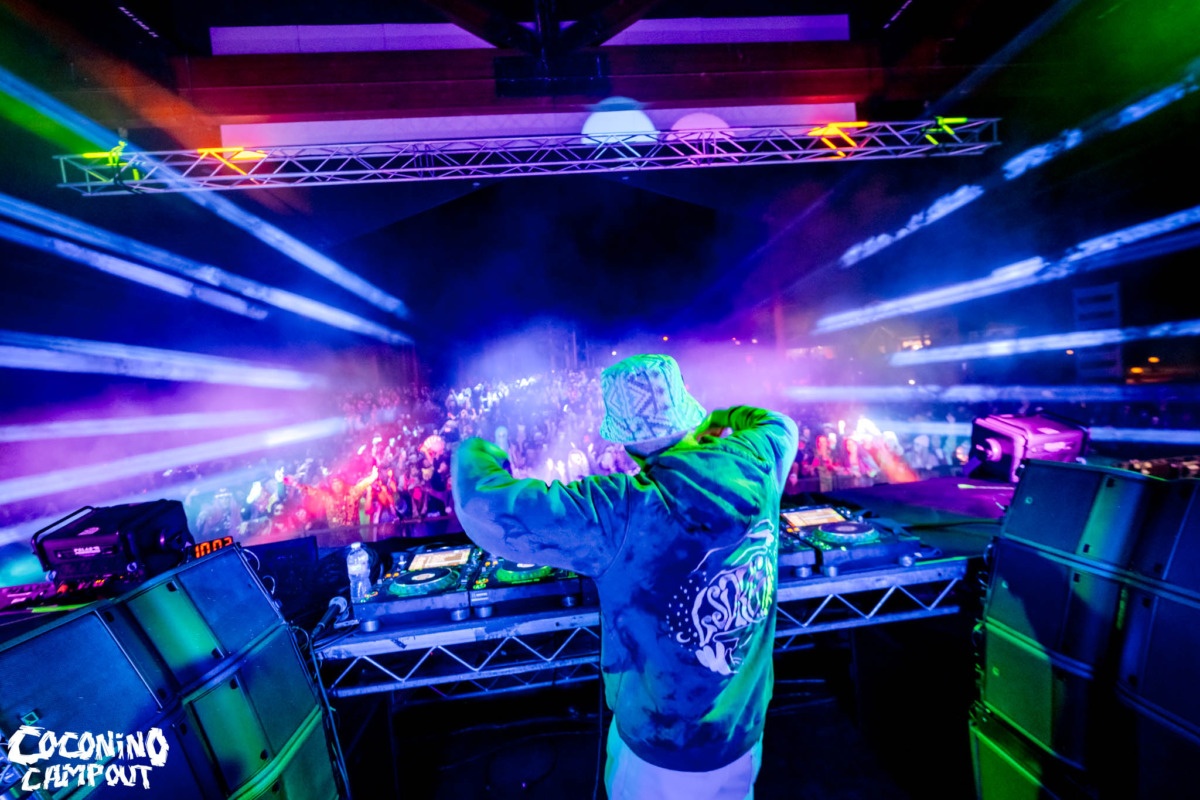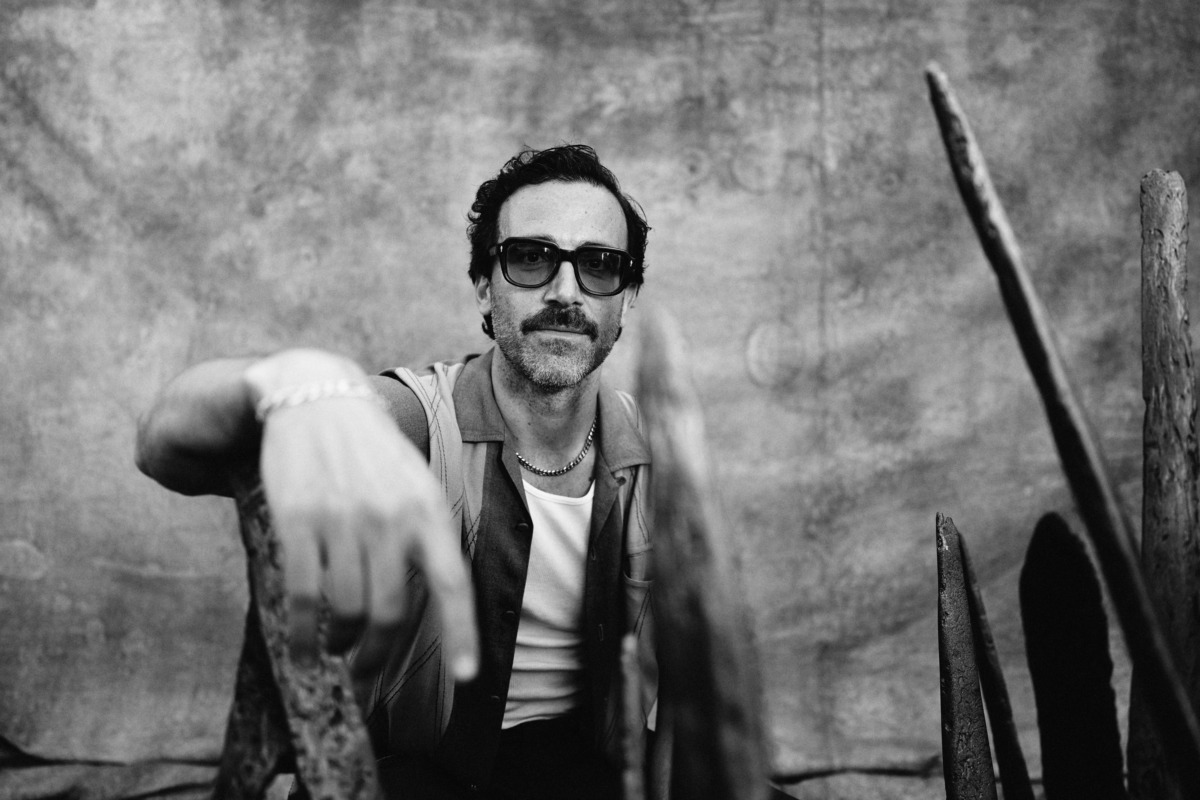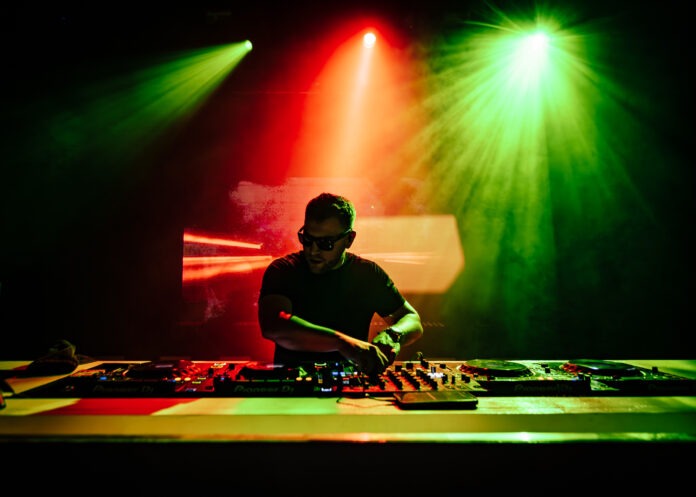Cody Chase continues to make waves on the Electronic Music scene, aiming to draw attention with his unique blend of Techno and Tech House, continually refining his craft both in the studio and on stage. Known for his high-energy performances, 4-deck live mixing, and distinctive production style, Cody Chase has consistently pushed his creative boundaries, seeking to offer music that is both fresh and unique to listeners worldwide.
Now, in this exclusive interview, Cody Chase joins us to share insights into his creative process, his latest studio upgrades, and the evolution of his sound as he aims to take his music to new heights.
Hi Cody Chase, how’s it going?
Hey! It’s going awesome, man, thanks for asking! Life’s been a whirlwind lately, balancing being a new dad and pushing forward in the music world, but I’m loving every second of it. Lots of exciting stuff going on with my releases and shows, and it feels like I’m hitting a new stride with my sound.
What is the current focus in your studio? Are you working on any new tracks or projects that you’re excited about?
Right now, my main focus in the studio is to get a record onto Drumcode, which is hands down my current favourite label and the king of Techno. I’ve been refining my sound, blending in deeper, more driving elements that fit perfectly with that Drumcode vibe. I just finished a new record called “Acid Rain,” and honestly, I’m stoked about how it turned out. It’s got that gritty, pulsating energy with a solid acid groove—feels like it’s tailor-made for the label. I can’t wait to see how it resonates with people. Beyond that, I’m always experimenting, but this track is definitely one I’m super hyped about!
Are there any new techniques or sounds you’ve been experimenting with in the studio recently?
Lately, I’ve been diving into some more intricate sound design, really focusing on creating textures that bring a whole new depth to my tracks. One technique I’m loving is manipulating field recordings—like everyday sounds from my environment—and layering them with synths to create this atmospheric vibe that feels organic but still hits hard. I’ve also been playing around with modular synths to add a more unpredictable, raw edge to my sound.
What is inspiring you in the studio these days?
Lately, a few things have been really firing me up in the studio. First, becoming a dad has brought a whole new layer of inspiration—it’s wild how much that changes your perspective. It’s pushing me to explore more emotional depth in my music while still keeping the energy up. I want to create tracks that connect with people on a deeper level, not just on the dance floor but beyond.
Musically, I’ve been super inspired by some of the stuff coming out of Drumcode, which has this hypnotic, driving energy that feels like it transports you somewhere else. That’s the vibe I’m aiming for with my latest tracks. Plus, watching how artists like Adam Beyer and Bart Skils evolve their sound while staying true to their roots—that’s been a huge motivator. It’s all about blending that darker, Techno edge with melodic elements to make something that feels timeless but fresh.
Lastly, my upcoming shows and festivals are always in the back of my mind when I’m producing. I want to create tracks that give me goosebumps, imagining how they’ll hit the crowd live. That anticipation of seeing a new track come to life on stage? That’s a huge part of what keeps me going in the studio.
Can you walk us through how you typically structure a track from start to finish? Do you approach your projects differently compared to your earlier work?
My approach to structuring a track has evolved a lot compared to when I first started out. Back in the day, I used to kind of shoot from the hip—just going with the flow and figuring things out as I went. It was fun but not always the most efficient way to work!
Now, I’ve tightened up my process, and it’s made a huge difference in how quickly I can get from idea to finished track. One big change is that I use track markers right at the start of every project. Before I even lay down a sound, I map out where key changes happen—where the breaks start, the drops hit, transitions, buildups—everything. It gives me a clear blueprint, so I always know where I’m headed, and it’s made the whole workflow so much faster and smoother. I can focus on sound design without getting lost in the structure.
Another thing I’ve started doing is using reference tracks. I’ll pick a few tracks that have the vibe or energy I’m aiming for, and I’ll use them as a guide for things like mix levels, bass presence, or how tight the drums feel. It’s not about copying, but more about making sure I’m hitting that quality benchmark. It’s really sped up my workflow, and I feel like I’m crafting tracks with more intention and precision compared to when I first started out.
How do you see your sound evolving next? Are there any new directions you’re looking to explore?
I’m super focused on evolving my sound in a way that aligns with my goal of joining the Drumcode family. One of my biggest ambitions right now is to become the king of American Techno, and I think the key to that is infusing my unique style into both my DJ sets and my production. As I mentioned earlier, Techno can sometimes feel very methodical, even a bit clinical. Don’t get me wrong, I love that driving, precise energy, but I think what’s often missing is soul—that emotional connection that takes the music from just head-nodding to goosebump-inducing. That’s where I want to take my sound next: keeping the power and precision of Techno, but introducing more warmth and depth, bringing some soul into the mix.
In my DJ sets, I’ve been blending Tech-House grooves and bass-heavy energy with darker, more hypnotic Techno. That fusion creates a really dynamic experience, and I plan to carry that over into my productions more and more. I want to craft tracks that have those razor-sharp, surgical elements but also have a melodic, emotional undercurrent that makes them stand out. I think that blend will be key to carving out my place in the Techno world while still staying true to my roots. It’s about creating a sound that’s sophisticated but visceral—where the audience feels the groove but also connects with the track on a deeper level. That’s the direction I’m pushing for, and I can’t wait to see how it evolves!
Have you integrated any new instruments or tools into your production that have changed the way you work?
Yeah, I’m still rocking my Irijule Theory Board—it’s such a powerful tool for laying down chords and melodies quickly and creatively. But lately, I’ve started integrating a couple of new toys into my workflow that have really been changing things up. One is the Roland TB-3, which I’ve been using to bring that classic acid vibe into my tracks. Whenever I want to add a gritty, hypnotic layer or just give a track that raw, underground energy, the TB-3 is perfect. It’s got that unmistakable acid sound, and I love how I can manipulate it in real-time, especially in live sets. That acid vibe adds this unpredictable, yet driving element that really amps up the intensity of the track. I’m also transitioning my Roland TR-8S into more of my drum production. I’ve always loved its hands-on approach for live sets, but now I’m using it to help shape my drums in the studio. It gives me more control over the groove, and I can tweak and layer patterns on the fly, which helps me build that punchy, driving rhythm that I love in Techno and Tech-House. It’s making my drums feel more dynamic and alive compared to just programming everything in the DAW.
These tools are pushing my sound forward, helping me blend that old-school acid and analog feel with more modern, precise production. It’s all about adding more depth and texture while keeping that tight groove that gets people moving!
With all your roles as a producer, DJ, and radio show host, how do you envision balancing everything while continuing to grow as an artist?
Balancing everything—producing, DJing, hosting the radio show, and now being a dad—has definitely been a challenge, but I’m super motivated to keep it all growing together. The way I see it, each role feeds into the other, and if I approach it right, they actually help me evolve as an artist rather than pull me in different directions.
First, with my production, I’m making sure I keep things focused and intentional. The sound I’m developing in the studio is aligned with my live sets, so everything flows. When I’m working on a new track, I’m thinking about how it’s going to hit on stage, how the energy will translate, and how I can use it in my DJ sets to stand out. Having those roles intertwined keeps me sharp creatively because I’m constantly thinking about both sides—studio and stage.
As for DJing, it’s still my primary passion. Playing live gives me instant feedback and helps me understand what works in the moment, which I can take back to the studio. Plus, being out there, interacting with the crowd, gives me fresh inspiration and insight into where I want my music to go. It’s like a cycle of growth—the shows inspire the studio work, and the tracks I create fuel my sets.
With the radio show, it’s more of a platform to showcase not only my music but also what’s inspiring me in the scene. It’s another creative outlet where I can connect with fans, explore new sounds, and stay on top of emerging trends. The cool thing is, it pushes me to stay current, and sometimes even the pressure of having to curate a show sparks new ideas for my own tracks.
To keep everything balanced, I’m really focused on time management—making sure I’m dedicating specific blocks of time to each role without overwhelming myself. I try to stay present in each moment, whether I’m in the studio, on stage, or behind the mic. And honestly, being a dad has taught me the value of that even more!
In the end, it’s about making sure each role supports my ultimate vision as an artist. The goal is to keep levelling up in all areas, but also making sure I’m enjoying the ride. The more I grow, the more I learn to balance it all while still pushing my creativity forward.
Since expanding your studio, how has your approach to integrating both analogue and digital tools evolved?
Expanding my studio has really allowed me to evolve my workflow, especially when it comes to integrating both analog and digital tools. I’ve always loved the precision and flexibility that digital tools offer, but there’s something about the raw, tactile energy of analog gear that adds a unique character to my tracks. So, blending the two has been a game changer for me. With more space and a better setup, I’ve been able to bring in more analog gear, like the Roland TB-3 for acid lines and the TR-8S for drums and use them more seamlessly in my productions. The approach now is to use these analog machines to capture that unpredictability and warmth they’re known for—whether it’s a deep acid bassline, a punchy drum loop, or even live tweaking of sounds—then combine them with the precision of digital plugins to really shape and polish the final product.
One thing that’s really changed is how I start my tracks. A lot of the time, I’ll jam out with the analog gear first—letting the machines guide the creative process and generate ideas. Once I have something solid, I move it into the DAW to layer, edit, and refine it. This keeps the spontaneity of analog alive but allows me to sculpt the track with the digital tools I’ve relied on for years. Having a hybrid setup has also opened up new ways to experiment. I’ll often run digital sounds through analog processing gear or resample them with my hardware to give them more texture and depth. It’s about finding that balance between the warmth of analog and the precision of digital—letting the imperfections of one complement the clean lines of the other.
All of this has definitely pushed my sound forward. I feel like my tracks are getting more intricate and full of life because I’m able to combine the best of both worlds. It’s allowed me to expand my creative options while keeping my workflow more efficient and exciting!
Finally, how do you stay up to date with evolving technology in music production, and what’s been the biggest game-changer for you recently?
Staying up to date with evolving technology in music production is crucial, especially with how fast things move in the industry. I make it a priority to keep an ear to the ground, whether that’s through online communities, forums, or talking with other producers and sound engineers. I’m always researching new plugins, hardware, and techniques—anything that can push my sound or make my workflow smoother.
Subscribing to platforms like Splice or Plugin Boutique helps a ton since they’re constantly showcasing new tools and sounds. Plus, going to events like ADE (Amsterdam Dance Event) or connecting with people at shows and festivals keeps me in the loop on what’s fresh and evolving.
Recently, the biggest game-changer for me has been integrating more modular synths into my setup. Modulars bring a whole new level of sound design—totally unpredictable, but in the best way possible. You can create sounds that feel alive and constantly evolving, which is perfect for the kind of Techno and Tech-House I’m aiming for. It pushes me creatively, because there’s no preset or template to fall back on—it’s all hands-on, experimenting with patching and rerouting signals. On the digital side, I’d say the rise of AI-driven plugins has been massive. Tools like iZotope’s Ozone or even the AI features in DAWs like Ableton Live have really streamlined the process of mixing and mastering. You can get great starting points for EQs, dynamics, and even arrangement suggestions, then tweak them to make it your own. It’s been a game-changer in terms of speeding up the technical side, letting me focus more on the creative aspects of production. But, honestly, it’s about balance.
I love embracing new tech, but I’m also careful to not get overwhelmed by it. I stay focused on what enhances my creativity, not just what’s trendy. It’s exciting how much is available these days, but at the end of the day, it’s all about how you use these tools to create something truly original.
As Cody Chase continues to evolve as both a DJ and Producer, his passion for pushing the limits of his sound remains unwavering. With ambitious goals, he continues to work towards expanding his reach, sustaining his focus when it comes to innovating and further honing his signature style. Whether through his live performances, carefully crafted tracks, or his ever-growing presence on the Electronic Music scene, Cody Chase is a name that fans of the genre should keep their eyes on. So, make sure to keep up with Cody Chase’s journey by following him across social media today.
Cody Chase Online
Website | Instagram | Soundcloud


